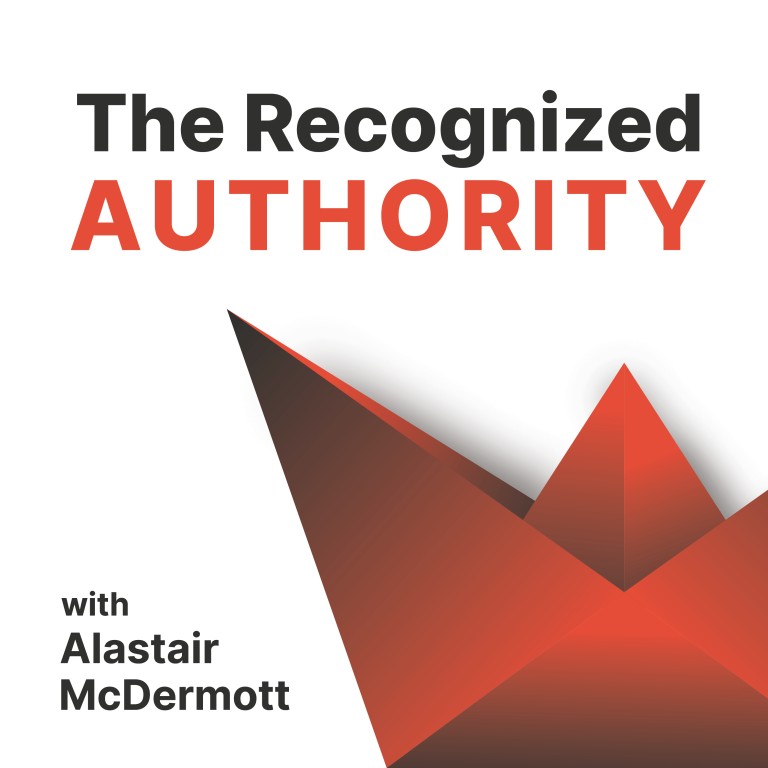One thing I wanted to achieve with my research project was to identify the best way to do lead generation for consultants. I looked at the different lead generation strategies and channels that could be used to acquire new business.
Selling in the professional services space is very different from the consumer market – much of that difference is due to the critical importance of establishing trust in the marketing and sales process. Consulting sales are never quick transactional sales like we see in consumer sales with its impulse purchases and fast-moving consumer goods.
At a minimum, a consulting engagement will be several weeks, with many stretching to months and even years. It’s even in the language – it’s an “engagement”, not a transaction.
I started to make an exhaustive list of the different lead generation strategies and channels. It was messy as there are innumerable options with lots of overlap between similar channels.
Three Main Categories – Lead Generation for Consultants
However, if we zoom out it’s possible to sort them into three high-level “buckets”:
- Referrals & Networking
- Outreach
- Inbound
Referrals & Networking
In the world of lead generation for consultants, referrals are sacrosanct. In my research, the vast majority of consultants use – and depend on – referrals to generate new business. Referrals are so crucial in this market because the referral passes trust. Without trust, there can be no sale.
Networking is very similar, ranked as slightly less effective by research participants – on average, it was listed as the second most effective lead generation strategy after referrals by the 177 consultants who participated in that particular survey. By networking, I’m referring to attending conferences, speaking, meeting for “coffee”, and similar activities (part of the difficulty in enumerating all of the options is there is huge overlap between different lead generation channels).
My thoughts: I built my first business – WebsiteDoctor – to a moderately successful income using referrals and networking locally. The business has a strong reputation in a 50 mile radius but is not well known outside of that. Building that reputation to where it creates regular referrals takes a long time and it’s easy to slip back into a “feast or famine” scenario. A lot of participants in my research found the same: referrals don’t work for everyone, and it can be dangerous to rely on them. In terms of pricing, you need a large flow of referrals to allow you to charge a premium.
Outreach
After referrals & networking, outreach is a frequently used – if unpopular – strategy. Outreach can take forms, but the basic approach is consistent: an agent of the firm contacts prospective clients in the hopes of generating new business. This is often “cold” outreach, where the prospective client has not had any contact with the firm previously. The agent may be the principal or an employee, and is often a 3rd party agency who have been contracted to do lead generation.
The traditional method of outreach is “cold calling”, which is contacting prospective clients by phone. This can be very successful and there are specific techniques – using scripts, avoiding gatekeepers, etc -that can help improve success rates, but ultimately it’s a numbers game. A sales trainer told me that making 80 calls a day is pretty standard (we should “embrace rejection”).
An average cold caller leaves 70 voicemails per day (!) according to ringlead.com. If you don’t mind spending 25 hours per month leaving voicemails, then cold calling might be for you, but it’s not for me.
The other issue with outreach is that it’s an interruption technique. You are calling, or emailing, or LinkedIn messaging someone who is not expecting to hear from you. This starts the trust counter on the wrong side of zero – you’re actually starting in negative territory.
These issues can be overcome, and outreach can be outsourced – typically to “lead generation agencies” that are very expensive. This might work for you, though be warned that it’s a good idea to have your sales process dialed-in before you approach a lead gen company.
My thoughts: I’ve never made a cold call, and never intend to. The thought of making 80 calls a day sounds like hell to me. I’d also rather not “outsource my oxygen supply” by relying on an external lead gen company. If these options do work for you, that’s great, and best of luck with it!
Inbound
Inbound marketing attracts prospective clients to you.
With inbound, the prospective client has engaged with your content in some way, perhaps your book, your blog, a whitepaper or even a YouTube video. And then they decide to approach you to enquire about engaging with your services.
In principle the concept is simple: regularly create authoritative content that educates your ideal clients about the problem that you help them to solve.
But simple isn’t easy, and creating content takes a lot of time. In fact “I don’t have time” is the number one reason most consultants don’t do it.
(Of course, “I don’t have time” really means “This is not a priority for me right now” – that’s fine, but don’t lie to yourself as to what’s happening.)
Crucially for consulting sales, inbound prospective clients have developed some trust already by consuming your authoritative content. If they have been part of your audience for some time, that trust might even be significantly higher than the trust level passed through a personal referral.
There are some ways to make inbound marketing significantly easier, but they carry their own risks and fears. I’ll cover those next time!
My thoughts: for me inbound is the Holy Grail. It does what you read about in online marketing sales pages: it generates a regular lead flow of ideal prospective clients – which allows you to increase prices.
Which of these high-level lead generation “buckets” are you in – referrals & networking, outreach or inbound?
Are you happy to stick with that approach or would you like to diversify to include other strategies? Hit reply and let me know!


